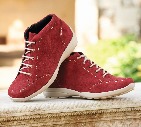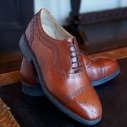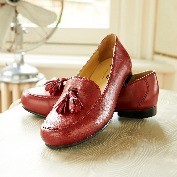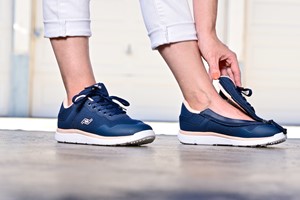Can shoes be comfortable, functional, healthy AND attractive?
Thirty or forty years ago, you might have struggled to find good-looking, wide-fitting shoes. Back then, wider fitting shoes were not necessarily attractive. They were functional, but often a little frumpy. Those men and women who had developed wide feet, either naturally or due to medical conditions, were destined never again to buy elegant shoes. How things have changed! Making wide-fitting shoes comfortable and safe is one thing, but making them fashionable and desirable is another.
During the last two or three decades, British footwear companies have concentrated on developing comfortable footwear for the wider foot, but with deeper toe boxes and with slimmer silhouettes. Today, podiatrists and end users can easily find shoes, slippers, boots and sandals with widths from 2E to 8E or in flexible, variable fittings, available in an extensive range of sizes and styles, for both men and women.

Since 2010, many wide-fitting shoe styles have been recognised by the Healthy Footwear Group in its efforts to improve the foot health of the nation. A case in point is casual style Stanley, a sporty, contemporary sneaker in a variable 2V fitting, in ladies sizes up to size 9.

Many trendy boots styles have also been awarded the Healthy Footwear Symbol, such as style Rochefort, a sporty style, in casual suede with attractive contrast details. The padded ankle collar gives extra support. It opens wide for easy access and laces securely.

You can also look for the symbol which denotes ‘healthy shoes’ in men’s footwear. A prime example is men’s style Lambeth, a smart formal shoe, with traditional Oxford-style lacing and brogue detail.

So, there are no excuses anymore. There’s a wealth of interesting shoes out there, in a variety of colours and profiles – and they’re healthy too.
Blog home >
Recent Posts
-
Friendly Shoes join the HFG-a warm welcome to you.
Introducing Friendly Shoes, the UK’s first fully adaptive footwear brand
Designed by an occupational therapist, …
read more
-
Cosyfeet achieves platinum in US and UK
Cosyfeet Achieves Platinum in US and UK
Cosyfeet, the Somerset-based retailer of premium footwear for people with …
read more
-
Cosyfeet wins Platinum with Feefo
Cosyfeet Wins Platinum with Feefo
Cosyfeet is the proud recipient of a Feefo Platinum Trusted Service award for 2022 …
read more




